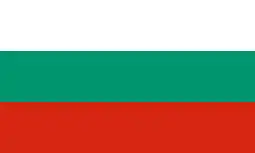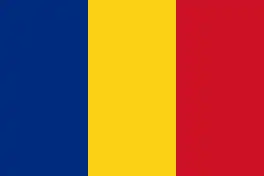 | |
Former name | École des Mines de Douai |
|---|---|
| Type | Grande école d'ingénieurs (public research university Engineering school) |
| Established | 1878, 1990, 2017 |
Parent institution | Institut Mines-Télécom[1] |
Academic affiliations | Conférence des Grandes écoles[2] University of Lille Community of Universities and Institutions (COMUE) Lille Nord de France |
| President | Alain-Louis Schmitt |
| Students | 2'000 |
| Location | , 50°22′31″N 3°04′04″E / 50.3751862°N 3.0677927°E |
| Campus | University of Lille (Cité Scientifique) and Douai |
| Website | http://www.imt-lille-douai.fr/en/ |
 | |
IMT Nord Europe or École nationale supérieure Mines-Télécom Lille Douai is a French graduate school of engineering (grande école d'ingénieurs). It is located in the Hauts-de-France region, shared between 2 campuses: the science campus (cité scientifique) of the University of Lille (Villeneuve-d'Ascq, European Metropolis of Lille); and the city of Douai. It is accredited by the Commission des Titres d'Ingénieur (CTI) to deliver the French Diplôme d'Ingénieur.
The school trains high-level engineers and scientists (Master and PhD level) in various technological fields. A small number of students are accepted each year, after a very selective exam. It is a crucial part of the infrastructure of French industry.
It is affiliated to University of Lille and Institut Mines-Télécom (Mines-Télécom Institut of Technology - IMT).
The École des Mines de Douai merged with TELECOM Lille in 2017 to become the largest engineering school in France north of Paris under the name IMT Lille Douai, then IMT Nord Europe.
History
The École des Maîtres-ouvriers mineurs de Douai was founded on 27 March 1878 on the same model as the École des mines d'Alès, founded forty years earlier. It was originally a vocational school providing for the training needs of skilled workers "Maîtres-mineurs" for the coal mining industry. Chief Engineers Lebleu and Peslin were its first directors. The number of admissions was 24 in 1878 and 20 in 1879, enough to meet demand, but fell to 15 in 1880 and averaged only 13 in the following decade.[3] An Alumni Societe (Société amicale des anciens élèves) was founded in 1886.[3]
On 10 February 1892 Henry Küss was entrusted with the Douai mineralogical district, including mining school, a post he held until 1906.[3] Under Kuss the number of admissions averaged 27.5. Only candidates who had working experience as minors were admitted.[3] To reassure critics who denounced training of civil servants and thought over-rapid improvement in the social status of workers would be dangerous, In 1905 Henry Küss stated that the pupils did "not need a very extensive scientific background, which they would anyway with very few exceptions be unable to assimilate.[4] By 1906, out of 393 alumni whose occupations were known, 151 were supervisors and 110 were surveyors or verifiers. From 18 January 1906 graduates of the school could be appointed contrôleurs des Mines in the colonies. By 1913 more than 80 of Küss's former pupils were working in the colonies or foreign countries.[3]
In the 1960s the school made basic changes to adapt to the recession in the coal industry. In 1965 it became a school for general engineers with two streams, Buildings/Public Works, and Mechanical/Metallurgy. Studies took four years, interspersed with five mandatory internships in companies. The school was authorized to issue an Engineering diploma in 1966. Research activity developed from the mid-1970s, and a technology incubator was founded in 1985 to support creation of innovative new businesses.[5] In 1980 the school became the Ecole Nationale Supérieure des Mines.
The École des Mines de Douai merged with TELECOM Lille in 2017 to become the largest engineering school in France north of Paris under the name IMT Lille Douai.
Education of IMT Nord Europe
All Institut Mines-Telecom (IMT) schools are Grandes Écoles, a French institution of higher education that is separate from, but parallel and connected to the main framework of the French public university system. Similar to the Ivy League in the United States, Oxbridge in the UK, and C9 League in China, Grandes Écoles are elite academic institutions that admit students through an extremely competitive process.[6][7][8] Alums go on to occupy elite positions within government, administration, and corporate firms in France.[9][10]
Although the IMT schools are more expensive than public universities in France, Grandes Écoles typically have much smaller class sizes and student bodies, and many of their programs are taught in English. International internships, study abroad opportunities, and close ties with government and the corporate world are a hallmark of the Grandes Écoles. Many of the top ranked schools in Europe are members of the Conférence des Grandes Écoles (CGE), as are the IMT schools.[11][12] Degrees from the Institut Mines-Telecom are accredited by the Conférence des Grandes Écoles[13] and awarded by the Ministry of National Education (France) (French: Le Ministère de L'éducation Nationale).[14]
First year
The selected students have various profiles. At the beginning the school offers a training with general courses:
- Mechanical engineering, materials science, computer-aided design
- Chemical engineering, environmental stakes
- Automation engineering, signal processing
- Programming, algorithms, information technology, mathematics, analysis, probabilities, statistics,
- Sports
- Project management, team management, law, economics
- Foreign languages: English as a first mandatory language, second mandatory language (German, Spanish, Russian or Mandarin Chinese), third optional language (German, Russian, Mandarin Chinese, Japanese, Arabic, Italian, Portuguese)
During the second semester, several elective courses are offered and give students the opportunity to learn a particular subject related to engineering topics. These courses are divided into 4 sections:
- Materials, mechanics, design: Chemical properties - Steel - Glass and refractory materials - Mechanical applications - Advanced computer-aided design - Structural materials
- Chemistry, environment, energy: Organic chemistry - Petroleum engineering - Nuclear engineering - Nuclear chemistry - System optimization
- Electrical engineering, electronics, automation: Electricity & environment - Automation - Numerical signal processing - Matlab/Simulink - Programming of sequential functions
- Computer engineering and mathematics: Cryptography and secret codes - Complex analysis - Advanced Excel - Numerical analysis - Data analysis - Web programming - Introduction to ActionScript - Embedded software development
The first year is equivalent to a bachelor's degree in general engineering: students have general knowledge about several engineering topics.
Second year
The second year is the first master year. Students are required to select a minor and a major. This couple of courses gives them a very personalized educational path. There are 13 minors and 8 majors. Some minors cannot be selected with some majors.
| Environment and industry | Civil Engineering | Energy Engineering | Mechanical Engineering | Quality Engineering | Computer Engineering | Industrial Engineering and Industrial Automation | Technology of Polymers and Composites | |
|---|---|---|---|---|---|---|---|---|
| Health, Quality, Environment in Civil engineering | X | X | ||||||
| Statistics of measures and risks | X | X | ||||||
| Techniques in Research and Development | X | X | X | |||||
| Structure of Materials | X | X | X | |||||
| Structural analysis | X | X | ||||||
| Manufacturing and Automation | X | X | X | |||||
| Acquisition, processing of measures and regulation | X | X | ||||||
| Hydraulics et Hydrogeology | X | X | ||||||
| Valorisation of materials | X | X | X | X | X | |||
| Renewable energies | X | X | ||||||
| Mobile applications and embedded systems | X | X | ||||||
| Decision Engineering | X | X | X | |||||
| Quality and security of information systems | X | X | X |
The 8 majors offered are:
- Environment and industry
- Civil Engineering
- Energy Engineering
- Mechanical Engineering
- Quality Engineering
- Computer Engineering
- Industrial Engineering and Industrial Automation
- Technology of Polymers and Composites
Third year
During the third year, in order to complete their technical knowledge students are required to study courses linked to professional positions. They have to select one group of courses among the following ones:
- Strategic Management
- Entrepreneurship
- Business and Sales
- International
- Research and Development
- Law expertise
- Logistics
- Purchasing
Academic partnerships of Mines Douai
Mines Douai has a various range of academic partnerships with French and foreign universities. French students can go to a foreign university during the second year and/or the third year. They can also earn a double degree with some of the universities below. Foreign students can also come to Mines Douai.
Partnerships in France for an academic exchange
- The other Écoles des Mines: Albi, Alès, Nancy, Nantes, Paris and Saint-Étienne.
- L’École Spéciale des Travaux Publics (Paris).
- L’Institut national des sciences et techniques nucléaires (INSTN) (Saclay ou Cadarache).
- University of Lille
Partnerships in France for a double degree
- University of Lille
- Audencia (Nantes)
- Télécom École de Management (Évry)
- IFP School (Rueil-Malmaison)
- Sciences Po Paris
- Sciences Po Lille
- University of Marne-la-Vallée
Foreign partnerships for an academic exchange
 Austria: Vienna University of Technology
Austria: Vienna University of Technology Bulgaria: Technical University, Sofia
Bulgaria: Technical University, Sofia.svg.png.webp) Canada: Université de Sherbrooke
Canada: Université de Sherbrooke Chile: University of Santiago, Chile
Chile: University of Santiago, Chile China: Zhejiang University Hohai University
China: Zhejiang University Hohai University Czech Republic: Technical University of Ostrava
Czech Republic: Technical University of Ostrava Germany : Technical University of Berlin, Braunschweig University of Technology, Brandenburg University of Technology, Clausthal University of Technology, Bauhaus
Germany : Technical University of Berlin, Braunschweig University of Technology, Brandenburg University of Technology, Clausthal University of Technology, Bauhaus India: Indian Institute of Technology Delhi, Vishwakarma Institute of Technology, Pune University, Indian Institute of Technology Kanpur
India: Indian Institute of Technology Delhi, Vishwakarma Institute of Technology, Pune University, Indian Institute of Technology Kanpur Japan: Kyoto Institute of Technology
Japan: Kyoto Institute of Technology Morocco: National School of Mineral Industry, École nationale supérieure d'électricité et mécanique (ENSEM) de Casablanca
Morocco: National School of Mineral Industry, École nationale supérieure d'électricité et mécanique (ENSEM) de Casablanca Poland: Wrocław University of Technology
Poland: Wrocław University of Technology Portugal: University of Minho
Portugal: University of Minho Romania: University of Galați, Politehnica University of Bucharest, Gheorghe Asachi Technical University of Iași, Politehnica University of Timișoara
Romania: University of Galați, Politehnica University of Bucharest, Gheorghe Asachi Technical University of Iași, Politehnica University of Timișoara Slovakia: Slovak University of Technology in Bratislava
Slovakia: Slovak University of Technology in Bratislava Spain: Polytechnic University of Catalonia, University of Zaragoza
Spain: Polytechnic University of Catalonia, University of Zaragoza.svg.png.webp) Switzerland: Université de Berne, ETH Zurich
Switzerland: Université de Berne, ETH Zurich UK: Durham University
UK: Durham University
Foreign partnerships for a double degree
 Brazil: Federal University of Rio de Janeiro, Universidade Federal de Ouro Preto, Universidade Federal do Espírito Santo, Rio de Janeiro State University
Brazil: Federal University of Rio de Janeiro, Universidade Federal de Ouro Preto, Universidade Federal do Espírito Santo, Rio de Janeiro State University.svg.png.webp) Canada: École polytechnique de Montréal, École de technologie supérieure
Canada: École polytechnique de Montréal, École de technologie supérieure China: Tsinghua University, Shanghai Jiao Tong University, Hohai University, Nanjing University of Science and Technology, Tongji University, Southeast University
China: Tsinghua University, Shanghai Jiao Tong University, Hohai University, Nanjing University of Science and Technology, Tongji University, Southeast University Germany: RWTH Aachen University (IKV and IKA)
Germany: RWTH Aachen University (IKV and IKA) New Zealand: University of Auckland
New Zealand: University of Auckland Russia: Bauman Moscow State Technical University, Novosibirsk State University of Architecture and Civil Engineering (Sibstrin)
Russia: Bauman Moscow State Technical University, Novosibirsk State University of Architecture and Civil Engineering (Sibstrin) Scotland: University of the West of Scotland
Scotland: University of the West of Scotland Spain: Escuela Técnica Superior de Ingenieros Industriales de Madrid
Spain: Escuela Técnica Superior de Ingenieros Industriales de Madrid Tunisia: École nationale d'ingénieurs de Sfax
Tunisia: École nationale d'ingénieurs de Sfax UK: Imperial College London, Cranfield University
UK: Imperial College London, Cranfield University USA: University of Delaware, Georgia Institute of Technology
USA: University of Delaware, Georgia Institute of Technology Vietnam: National University of Civil Engineering
Vietnam: National University of Civil Engineering
Other schools of Mines in France
- École nationale supérieure des Mines d'Albi Carmaux (Mines Albi-Carmaux)
- École nationale supérieure des Mines d'Alès (Mines Alès)
- École nationale supérieure des Mines de Nancy
- École nationale supérieure des Mines de Nantes (Mines Nantes)
- École nationale supérieure des Mines de Paris (Mines ParisTech)
- École nationale supérieure des Mines de Saint-Étienne (Mines Sainte-Etienne)
- École Nationale Supérieure des Mines de Rabat (Mines Rabat)
References
- ↑ "IMT - The number-one group of engineering..." Institut Mines-Télécom. Retrieved 31 January 2022.
- ↑ "IMT Douai - CGE". CGE. Conférence des grandes écoles. Retrieved 30 January 2022.
- 1 2 3 4 5 Lallemand, Ch. (1922), "Notice Necrologique Sur Henri Kuss : Inspecteur Général Des Mines, Directeur De L'école Nationale Supérieure Des Mines", Annales des Mines, II, retrieved 2017-08-05
- ↑ Lembré, Stéphane (September 2013), "L'enseignement professionnel pour l'exemple? Économie minière et besoins de formation aux origines de l'École des maîtres mineurs de Douai (1860–1914)", Histoire, Économie et Société, Armand Colin, 32 (3: Morales de la Consommation et Moralisation des Consommateurs): 95, JSTOR 23614450
- ↑ Historique, Mines Douai, retrieved 2017-08-07
- ↑ "France's educational elite". Daily Telegraph. 17 November 2003. Retrieved 5 February 2019.
- ↑ Pierre Bourdieu (1998). The State Nobility: Elite Schools in the Field of Power. Stanford UP. pp. 133–35. ISBN 9780804733465.
- ↑ What are Grandes Ecoles Institutes in France?
- ↑ Monique de Saint-Martin, « Les recherches sociologiques sur les grandes écoles : de la reproduction à la recherche de justice », Éducation et sociétés 1/2008 (No. 21), p. 95-103. lire en ligne sur Cairn.info
- ↑ Valérie Albouy et Thomas Wanecq, Les inégalités sociales d’accès aux grandes écoles (2003), INSEE
- ↑ "Listings Archive". Conférence des Grandes Écoles. Retrieved 29 January 2022.
- ↑ "Higher Education in France". BSB. Retrieved 26 January 2022.
- ↑ "Conférence des grandes écoles: commission Accréditation". Conférence des grandes écoles. Retrieved 21 January 2022.
- ↑ "Etablissements dispensant des formations supérieures initiales diplômantes conférant le grade de master". Ministry of France, Higher Education. Ministère de l'Enseignement supérieur, de la Recherche et de l'Innovation. Retrieved 16 January 2022.